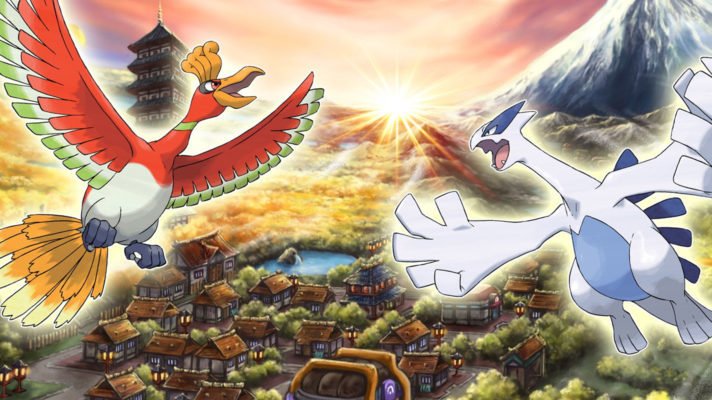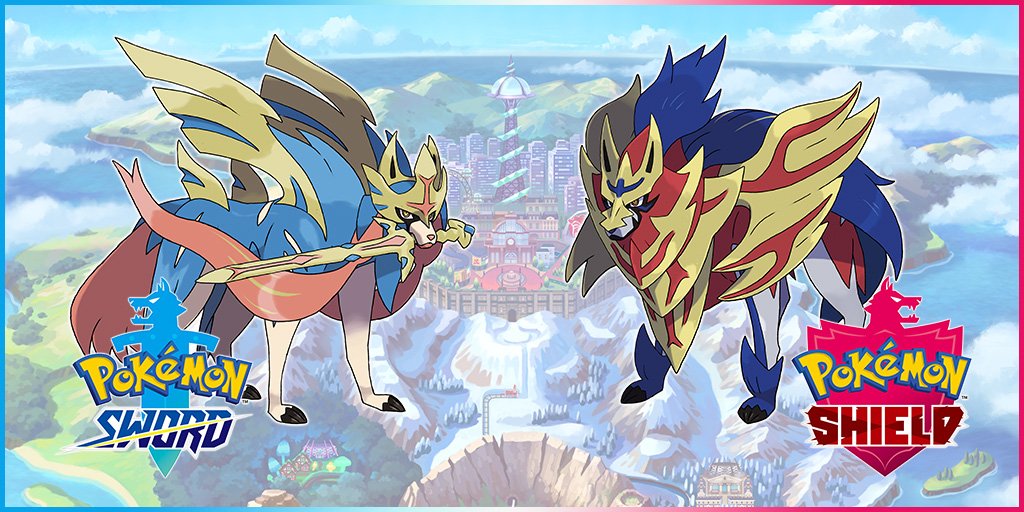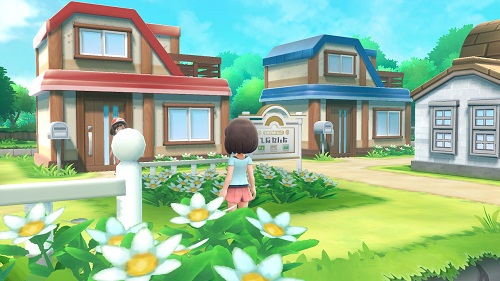
My long relationship with Pokémon began one fateful Christmas morning, when after months of pleading my mum presented me with a copy of Pokémon Red for my Gameboy. I fell in love with the game instantly and a decades long obsession with the franchise was born. Such was my infatuation with the mainline Pokémon games that no matter my position in life, I have always found a way to afford the latest Nintendo handheld and Pokémon games. Throughout all of this, however, a thought niggled away at me. What if I could play those same games on my TV, with all the wonderful perks a big TV could afford? Well, with the Nintendo Switch’s hybrid nature, my prayers were finally answered and Pokémon Let’s Go was born. The game is a thematically faithful rebirth of the original Pokémon Yellow, with some changes, for better and worse, to coincide with the rise of Pokémon Go.
From its opening moments Pokémon Let’s Go wears its heart on its sleeve, triggering waves of nostalgia with its faithful recreation of the Kanto region. As soon as my character left their house, I immediately recognised Pallet Town and knew exactly where everything I needed was. There is something special to seeing an environment that captured so much of my childhood so faithfully recreated and brought into modern times. This is true for all of Pokémon Let’s Go, where every Pokémon, town and route are immediately recognisable, yet beyond anything we’ve seen in a Pokémon game before. The soundtrack of the original games has been recreated, now with instrumental performances, yet they still trigger the same nostalgic feelings. The world is colourful and vibrant, with a charming art style that pulls it all together. However, while the game’s colours and vibrancy are welcome, the models used are somewhat lacking in detail, with a plasticky sheen to their textureless bodies, and jagged edges abound. There are also issues with slowdown and framerate drops when playing the game in handheld mode. This was most prevalent in areas like the Pokémon Road, where opening the in-game menu caused the game to move at a crawl and left me avoiding the menu unless it was urgent. These are issues that detract from the experience somewhat but aren’t game breaking or enjoyment destroying, they’re just a bit annoying.
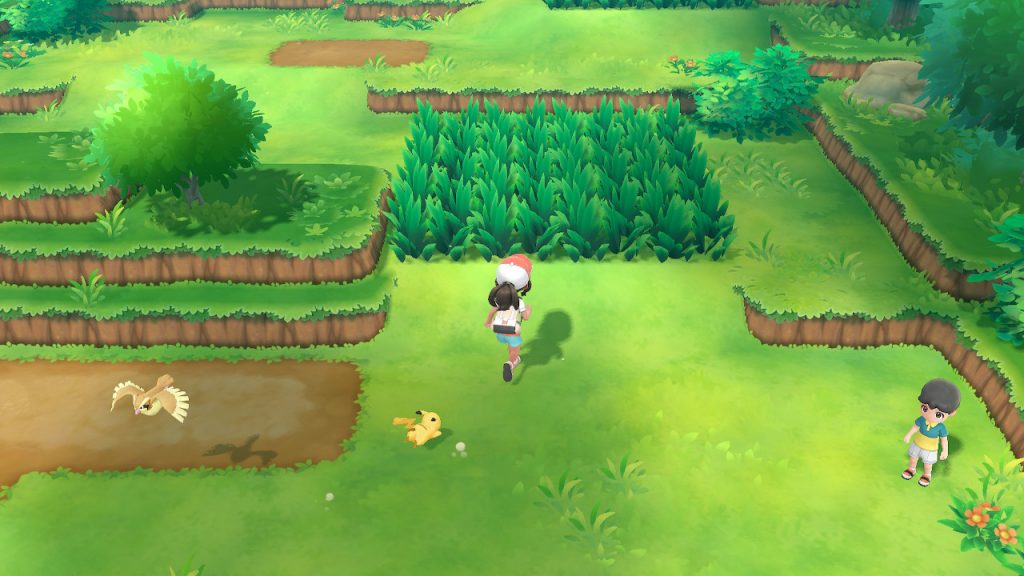
While there is so much nostalgia in Pokémon Let’s Go, there are also a raft of changes that make the game different to anything before it. The biggest of these is the removal of wild Pokémon battles, instead replaced with Pokémon Go-esque encounters where your sole focus is throwing pokéballs to catch the Pokémon at hand. While this change may frustrate some, I personally welcome it and had a great deal of fun lobbing pokéballs at every Pokémon I could find. The main reason for liking the new encounter system is that, coupled with Pokémon now appearing on the field, it speeds the game up in a way that was never possible before. I can now choose when I enter an encounter with a Pokémon, instead of the random encounter deciding for me, and the option to transfer Pokémon to receive stat-boosting candy brings an extra relevance to encounters beyond being experience sinks. Unfortunately, these encounters also bring to the surface one of my biggest frustrations with the game – its forced motion controls.
The specific reason for that frustration is that the motion controls can be wildy inconsistent at times, especially when playing using joy-con. There were multiple times when playing with a joy-con that my straight arm throws would completely skew off in any direction but forwards, and throws would repeatedly go long, despite me just flicking my wrist. This was largely rectified by using the Pokéball Plus, the specially built controller for the game, which better translated my motions and gestures to the game. In fact, the Pokéball Plus was my favourite way to play the game, with the extra lights and sounds that it emits during gameplay adding to my immersion into the game. This is despite the lack of buttons causing some actions, such as marking a Pokémon, to take longer than without it, and the handheld mode gyro aiming controls being the most accurate way to throw pokéballs. And if you’re worried about there being a lack of battles in game, don’t, because there are a massive number of trainers to battle, from regular trainers to Master Trainers specialising in a single Pokémon. In fact, I would go so far as to say that certain areas in the game have too many trainers, and drag the experience down somewhat due to an oversaturation of battles.
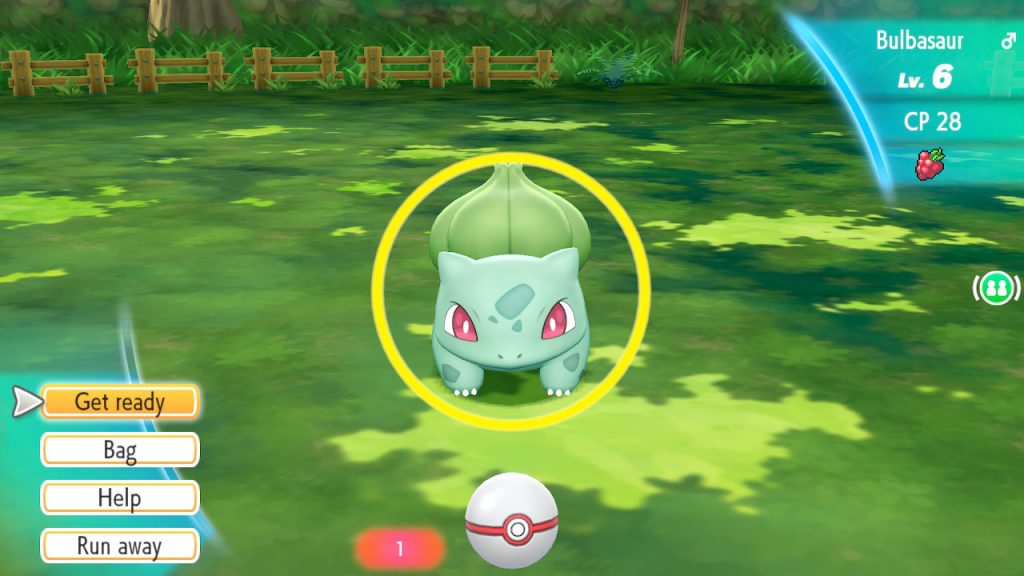
The other changes to Pokémon Let’s Go come in the form of its Pokémon, or more specifically, what you can do with them. Ever since Pokémon Heart Gold and Soul Silver let your Pokémon follow you I’ve been disappointed that future entries haven’t followed suit, but the feature makes a triumphant return in Pokémon Let’s Go and even goes one step further in letting you ride certain Pokémon. There’s nothing else quite like letting a Pokémon loose from its pokeball so that you can see what’s its behaviours are like. Will it follow behind you, will it run ahead of you or will you be find yourself precariously placed upon it? Some of the animations and situations surrounding this feature are utterly absurd, but I won’t spoil them by going into specifics, just know that there is definitely reason to check out different Pokémon in-game. The one frustration with this, however, is that the Pokémon have no animations for collisions or AI for pathfinding. Instead, if you run into a space they cannot fit, collide with you or get stuck behind a wall they’ll simply disappear only to reappear at your side. Some more AI and animation for them certainly wouldn’t have gone astray.
Another change is in your Partner Pokémon (Eevee or Pikachu depending on your version) and how they interact with you and the world. For years HM Slaves – Pokémon carried with you simply to know specific overworld moves – were a major frustration in the series, one that was fixed with the introduction of Ride Pokémon in Pokémon Sun and Moon. With Pokémon let’s Go Gamefreak have stuck to their guns and HMs are once again a thing of the past, now replaced by special moves taught to your Partner Pokémon. What results are absurd scenarios, like your Eevee flying you around with balloons or your Pikachu surfing across the water, that keep the mood light and don’t grow old. Beyond this, your Partner Pokémon is prevented from evolving in the game, so to make up for this their stats have been boosted, and can be further boosted (as can all Pokémon) by the use of candy gained from transferring Pokémon, and they can learn brand new special attacks. These attacks take different forms- Pikachu’s attacks are based on combatting Pokémon types it is normally weak against, while Eevee’s are based on the seven different Eeveelutions it can normally become. What this means is that while your Partner Pokémon can’t evolve, it can still be a force to be reckoned with, thanks to a wide spread of attack types and stat boosts, however, you’re not forced to keep it in your party if you would prefer to use other Pokémon. Finally, character customisation is back, except now you can also dress your Partner Pokémon up in cute outfits as well. I spent way too much of my time cycling through outfits to find the perfect combo and loved every moment of it.
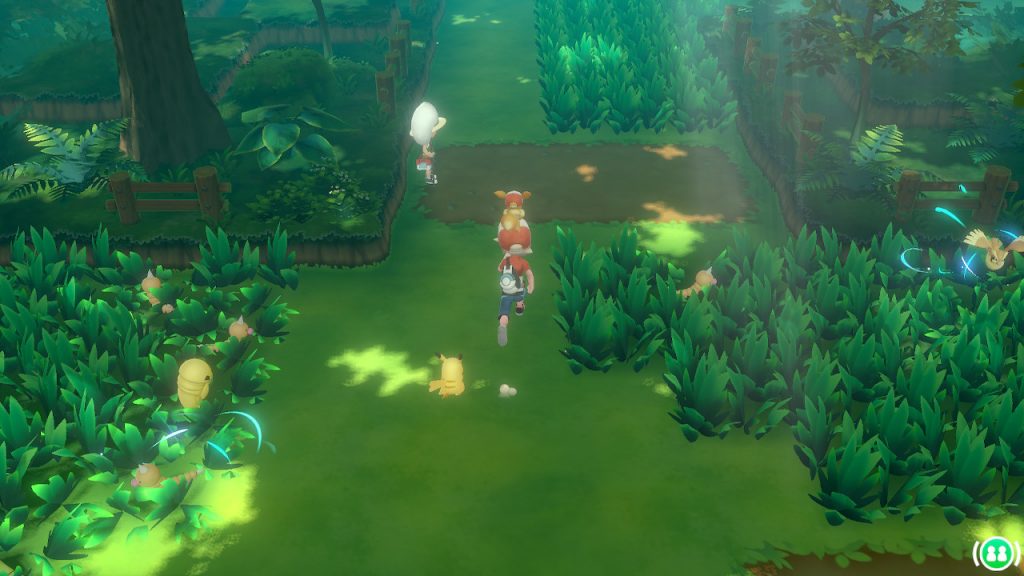
The final changes to Pokémon Let’s Go come in the form of Pokémon Go integration and a few quality of life changes. If you’ve played Pokémon Go before then you’re likely already well acquainted with transferring excess Pokémon, and now instead of transferring them into the ether you can instead send them to the Go Park Complex in Pokémon Let’s Go, which replaces the Safari Zone from the original game. The connection process was relatively problem free for me, and from there I was transferring hordes of Pokémon into the complex, which provided me the same candy rewards in Pokémon Go that I would normally receive from a transfer. Once transferred, you’re then able to enter the Complex’s parks to stroll around, insteract with the Pokémon, and even catch them if you want to add them to your party/Pokédex. This follows the same mechanics as the rest of the game, which can lead to some Pokémon taking a while to catch. If you have enough of a single species of Pokémon, you can also play a mini-game with them that gives you rewards upon completion. It’s nice to see the Pokémon I catch while on the tram or train going somewhere other than some unspecified lab, and I really enjoy seeing my years of Pokémon Go time making a difference in the main series.
The last quality of life changes comes in two forms, your new Pokémon Box and experience sharing. Previously, if you wanted to change the Pokémon in your party you had to take the time to go back to a Pokémon Center to access a PC and swap Pokémon out. That’s now a thing of the past, as your entire collection of Pokémon are accessible at all times. What this means is that you can always tailor your party at any time, allowing for a freedom that was never there before and is most welcome. Another frustration in the past was the series implementation of IVs – hidden stats that determined your Pokémon’s inherent maximum stat values. These are now more visible, once you see a specific assistant of Professor Oak anyway, allowing you to make calls on a Pokémon’s competitive viability without having to resort to calculators on external websites. Another example of these ease of access changes is the ability to make all Pokémon a certain Nature until midnight via an NPC in Celadon City. Natures also affect a Pokémon’s maximum stats, and previously it was up to random chance what you got. Now, you can set a specific complementary nature and then go on a hunt for the Pokémon you want, knowing that it definitely has the nature you want. The game also does away with the forced singular pathway of past games, allowing you to tackle gyms in any order you want between the third and seventh gyms, giving you a freedom that has never been in the game before.
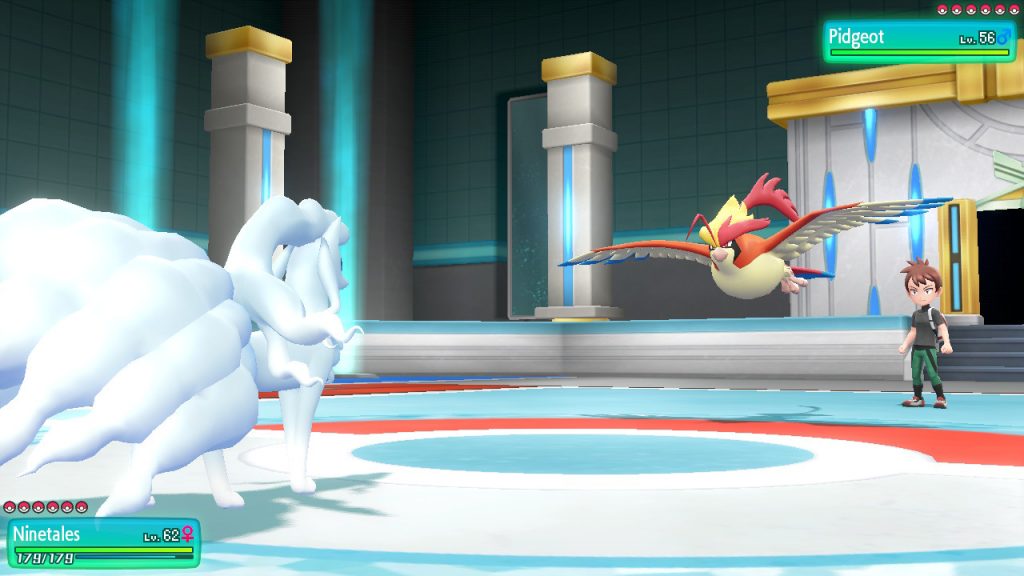
The final big change is one that is sure to be divisive – permanent experience sharing. Previous Pokémon games have changed the experience share item to cover the whole party and gradually brought forwards how early you’ll receive it, but Pokémon Let’s Go goes a step further by making it a permanent implementation right from the beginning of the game. What this means is that your whole party is constantly receiving experience from battles and captures, removing the need for most of the grinding previously required in the game. What this also means, is that the game is largely a cake walk, because your party of six is almost always overpowered compared to a gym leader’s three or four Pokémon. While this will certainly help prevent many people from becoming frustrated at difficult battles and helps to speed the game up by removing hours of grinding, I feel like it goes a bit too far in its implementation. I would have much preferred to see this as the default implementation, with an option to turn it off, instead of requiring you to effectively gut your party if you want to make the game more difficult for yourself.
In the end, Pokémon Let’s Go is a solid entry in the main series and a great jumping off point for newcomers to the series. Limiting the game to the Kanto region helps appeal to the nostalgia of lapsed-players and also prevents the game from being convoluted and intimidating to new ones. The quality of life changes are incredibly welcome, beyond forced experience sharing, while the new capture mechanics speed the game up and are enjoyable, even if the motion controls behind them aren’t always perfect. Following Pokémon make a welcome return, despite their weird collision implementation, and your Partner Pokémon is both adorable and incredibly effective. Overall, Pokémon Let’s Go is a game that any fan of the series, and anybody slightly interested in the idea of it, should play.
- Following Pokemon return - Partner Pokemon is adorable and well implemented - Pokemon on the big screen is fantastic - Nostalgia hit after nostalgia hit - Quality of life changes genuinely make life in-game better
- Jagged edges and framerate issues in handheld mode - No option to stop experience sharing - Motion controls can be frustrating, especially using joy-con



